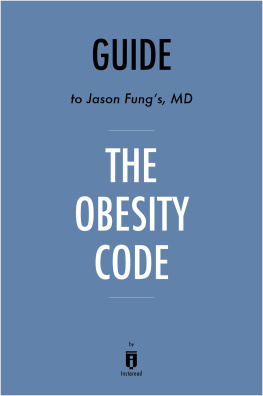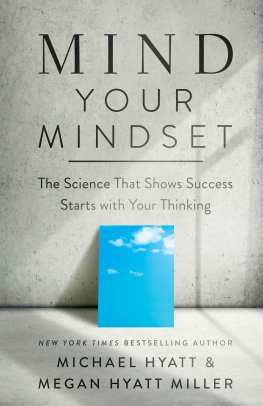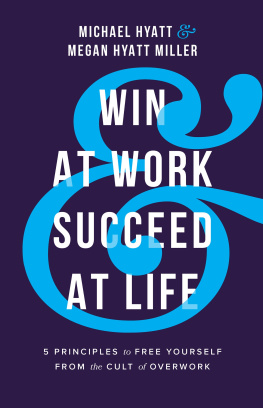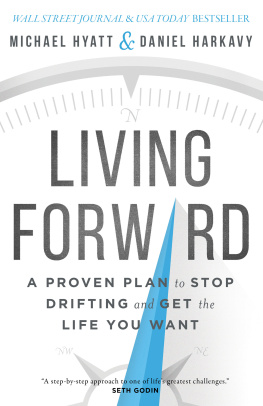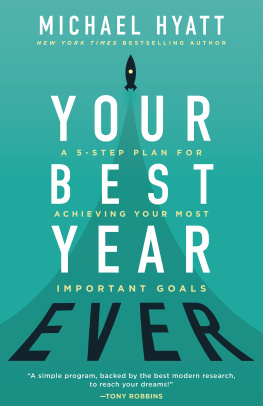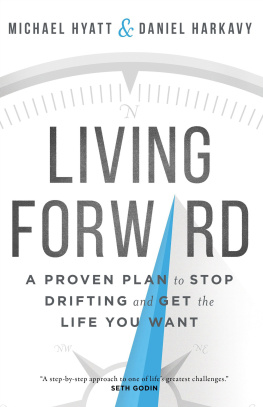Guide to
Michael Hyatts & et al
Living Forward
A Proven Plan to Stop Drifting and Get the Life You Want
by
Instaread
Please Note
This is a companion to the original book.
Copyright 2016 by Instaread. All rights reserved worldwide. No part of this publication may be reproduced or transmitted in any form without the prior written consent of the publisher.
Limit of Liability/Disclaimer of Warranty: The publisher and author make no representations or warranties with respect to the accuracy or completeness of these contents and disclaim all warranties such as warranties of fitness for a particular purpose. The author or publisher is not liable for any damages whatsoever. The fact that an individual or organization is referred to in this document as a citation or source of information does not imply that the author or publisher endorses the information that the individual or organization provided. This concise companion is unofficial and is not authorized, approved, licensed, or endorsed by the original books author or publisher.
Table of Contents
Overview
Living Forward explains the importance of having a concrete Life Plan to prevent drifting from day to day and instead live a proactive life of success without regrets. The authors outline how to create a Life Plan and share success stories that exemplify the opportunities a well-thought-out Life Plan can provide.
Drifting happens when people lose passion and progress in aspects of their lives. They may feel stuck in their career, having lost motivation and progress. They may feel that their responsibilities are so overwhelming that they arent enjoying life to the fullest. These life accounts, such as self, family, career, and finances, need to be maintained with a positive balance. If one of these accounts dips into the red, a Life Plan can restore balance to that particular life account. People must first identify their priorities and then order them to reflect whats most important. As people write their Life Plan, they envision the future, including what that life account would ideally look like, and compare their current situation with that ideal future. If they write the steps it would take to restore passion in that area, they can then make progress forward, closer to that ideal balance.
Regular review and updates to the Life Plan will ensure that it is a living, evolving document that remains a relevant tool that people can use to get back on track if they ever feel they are drifting through life once again.
Important People
Michael Hyatt is a coauthor of the book. He is a business expert and an executive in the publishing industry who uses life planning to keep his priorities straight and pursue his lifes goals.
Daniel Harkavy is a coauthor of the book. He is a life and career coach for business leaders through his business Building Champions.
Key Insights
- Drifting through life can happen to anyone for various reasons. Its consequences can vary depending on the person, situation, and reasons for drifting.
- A Life Plan is a specific type of document that enables people to answer certain questions about their lives and desires and outline the steps they will take to achieve their goals.
- A Life Plan brings a number of crucial benefits to the planners life in addition to the goals themselves.
- To create an effective Life Plan, the first step is for people to think about the end of life and the legacy they will leave behind.
- A Life Plan is determined by priorities identified in the planners life accounts, each of which the planner classifies with weight of importance and level of urgency.
- A Life Plan must have a detailed, concrete action plan with a number of sections that contextualize the goals people have for each life account and the steps they will take to attain them.
- Regular review of a Life Plan is the way to facilitate its success.
- Businesses can benefit from encouraging their employees to create a Life Plan because achievement of life goals and personal fulfillment can improve performance at work.
Analysis
Key Insight 1
Drifting through life can happen to anyone for various reasons. Its consequences can vary depending on the person, situation, and reasons for drifting.
Analysis
Drifting tends to happen for one or more of four reasons: people are unaware of whats going on in their life or what is at stake, they are distracted by their career or a hobby, they are overwhelmed with responsibilities and commitments, or they are deceived by their own mind in terms of beliefs versus reality. Regardless of the reason for drifting, living life in this way can lead to one or more of five primary consequences. The drifter can become confused and lose perspective and meaning in life. Drifting can be expensive in terms of wasted time and money. It can lead to lost opportunities and the inability to distinguish between opportunities and distractions. Drifting can cause physical, mental, and emotional pain, such as a lack of fulfillment or poor health. Finally, drifting can lead to regrets and if onlys.
Drifting can happen to anyone, regardless of age, level of career, or other characteristics. It even happens to people who seem to have their lives put together. For example, a college student on the deans list may seem driven and motivated, but she may be drifting aimlessly through her courses, unsure of how what shes learning might apply to what she wants to do in the future. She may find herself graduating with honors and getting an entry-level job while having no idea what to do with her life.
Sometimes drifting comes from a lack of stimulation in career, relationships, or hobbies. But other times it can happen when the brain is hyper-stimulated. This causes the mind to crave more stimulation, such as technology, as a distraction that might allow the stressful parts of life to drift by in the background. [1] To combat under- or over-stimulation, individuals can exercise presence and mindfulness to stay engaged with whats happening in their lives in real time. This could be achieved through mindfulness meditation practice or through conscious manipulation of thought that centers a person back to the present through persistent effort over time.
Key Insight 2
A Life Plan is a specific type of document that enables people to answer certain questions about their lives and desires and outline the steps they will take to achieve their goals.
Analysis
A Life Plan is a short, written document derived from answering three key questions: how people want to be remembered, what matters most to them, and how they can get there from where they are at present. People create the plan for themselves and by themselves, unless they want to share it with a close confidant or mentor. The Life Plan clearly articulates both priorities and specific steps people need to take to achieve their goals in each of the major areas of life. It is also an evolving document that changes over time as life circumstances change.
The structure of these three questions could have psychological benefits for the planning process. If the college student from the example above were to sit down and try to write her Life Plan without any prompts, she could easily become overwhelmed with possibilities. Instead, having specific questions to answer grounds her in her current task and produces more meaningful and effective answers.
This is a tactic commonly used in business. For example, a business will prompt customers with specific questions about their needs and challenges rather than outright asking them what they believe they want. [2] Specific questions help guide people to the root of their problems and uncover solutions to those problems, both of which are necessary to the Life Plan writing process.
Next page





